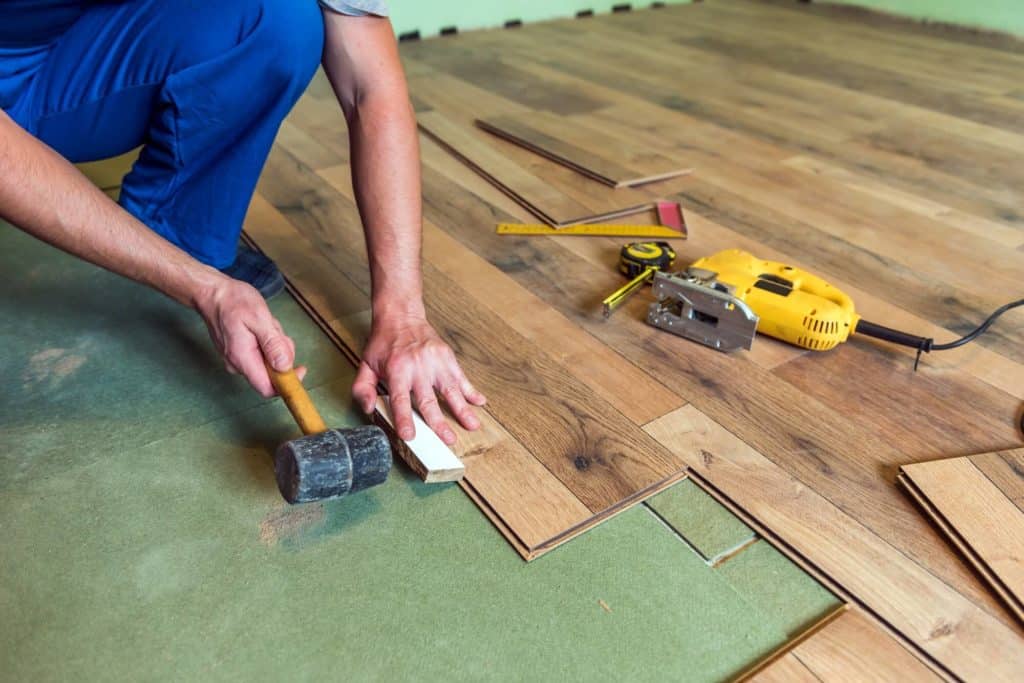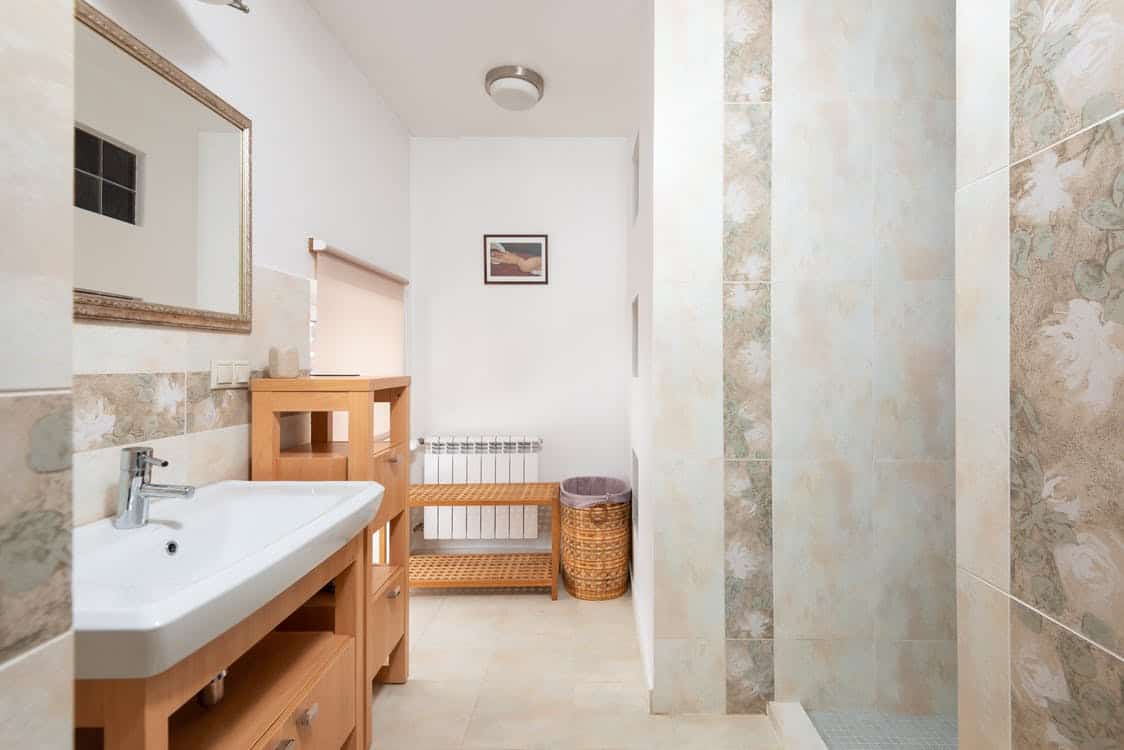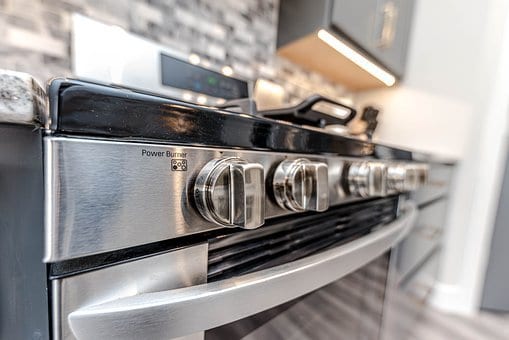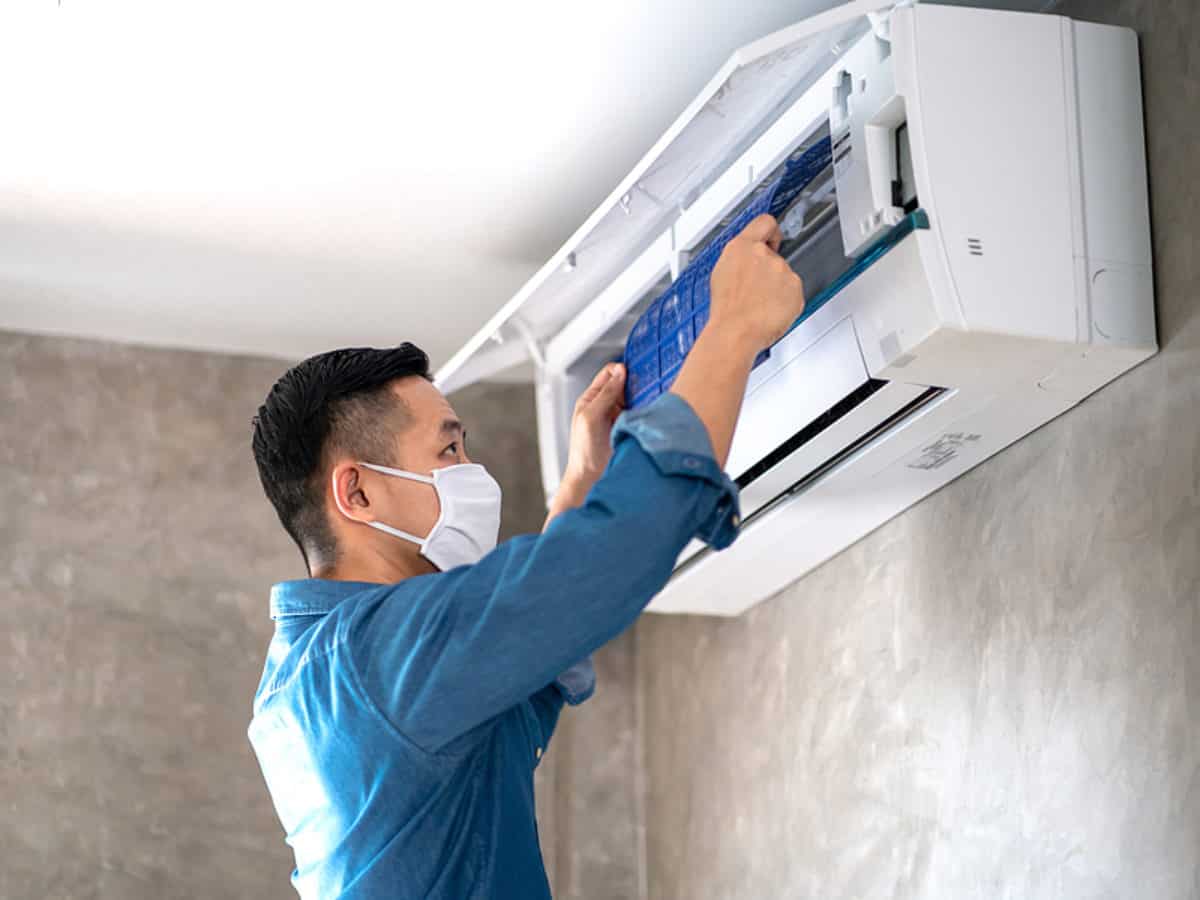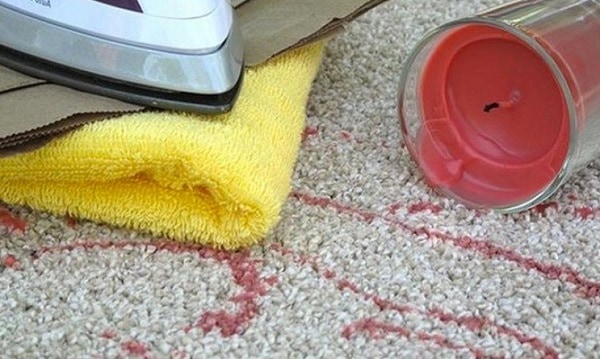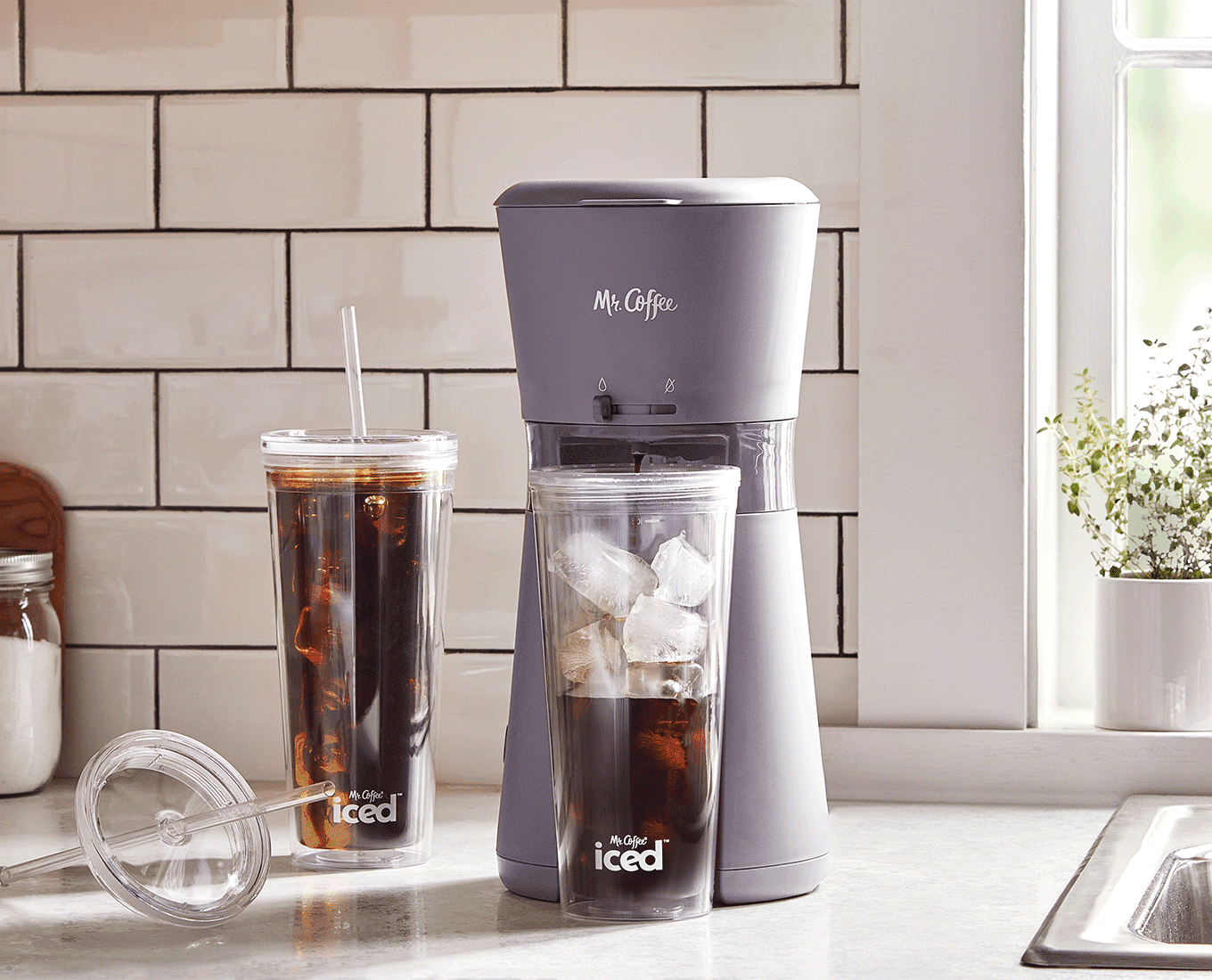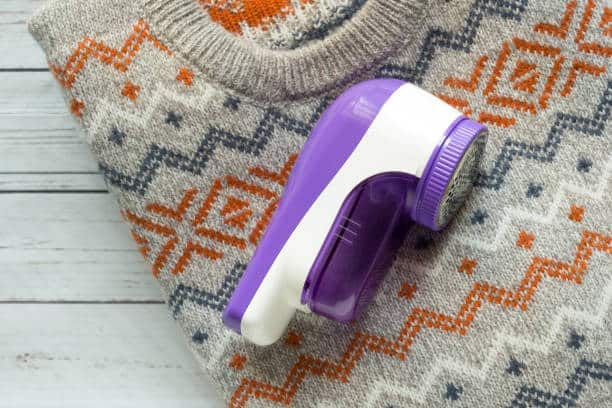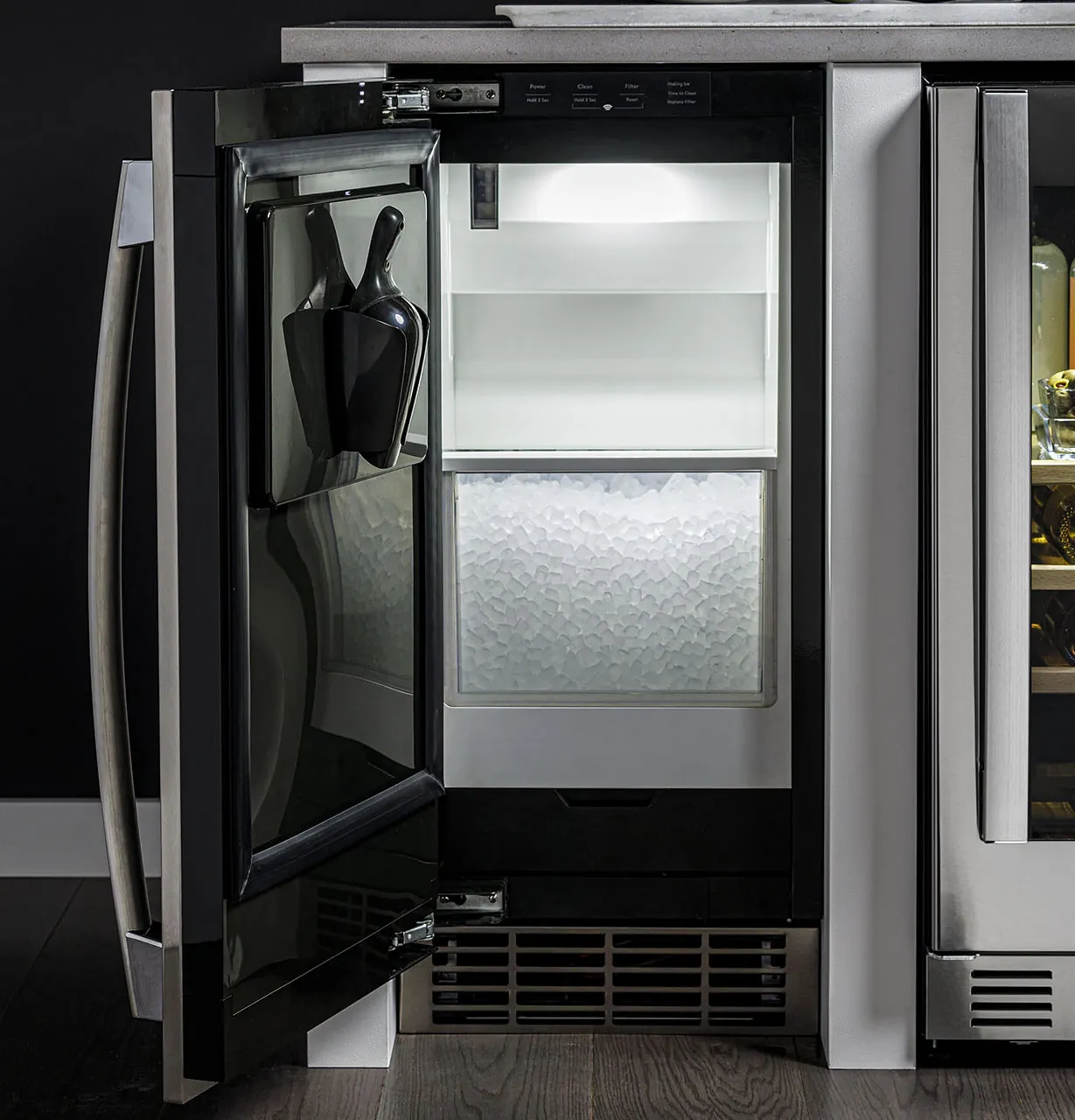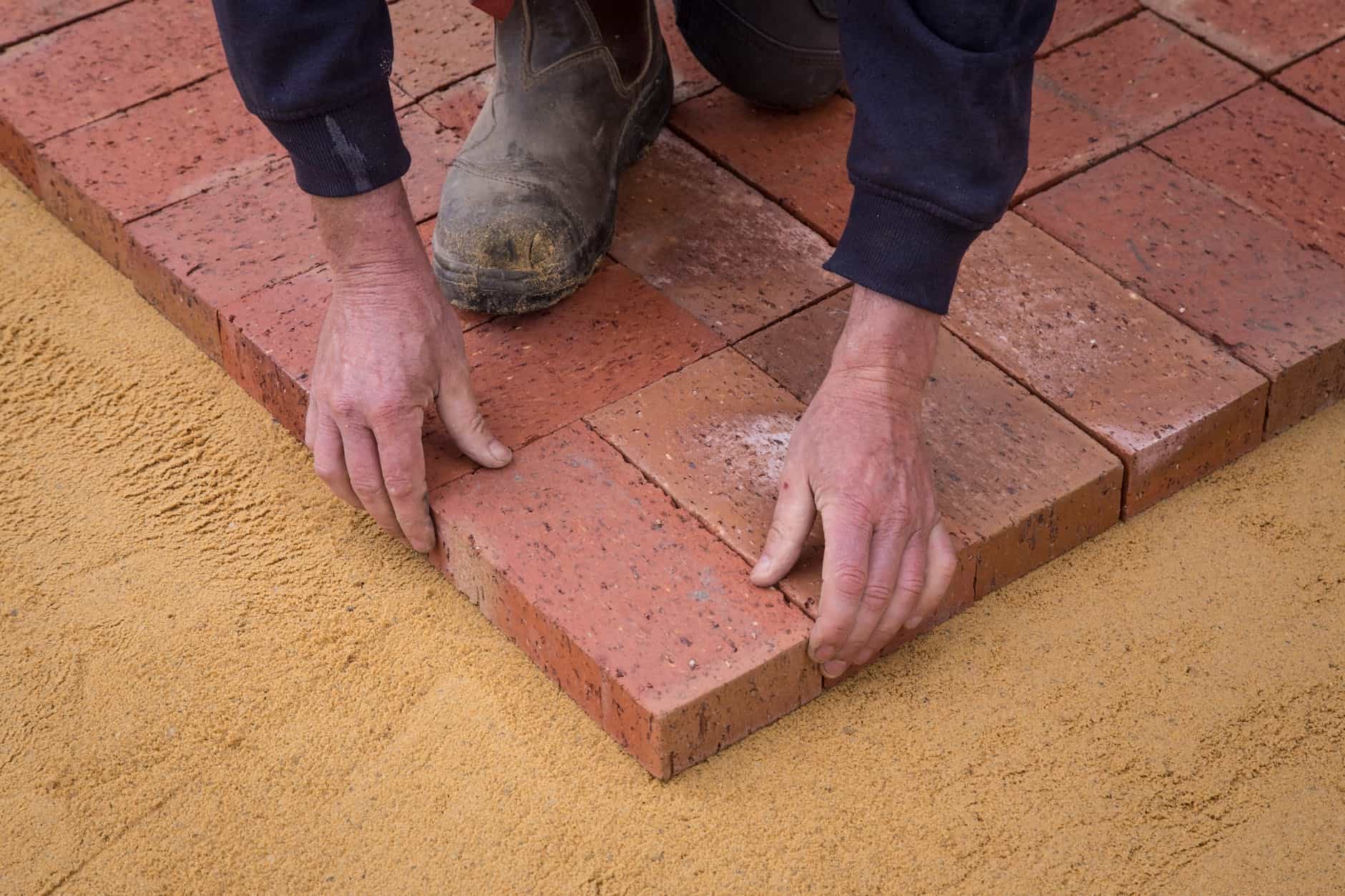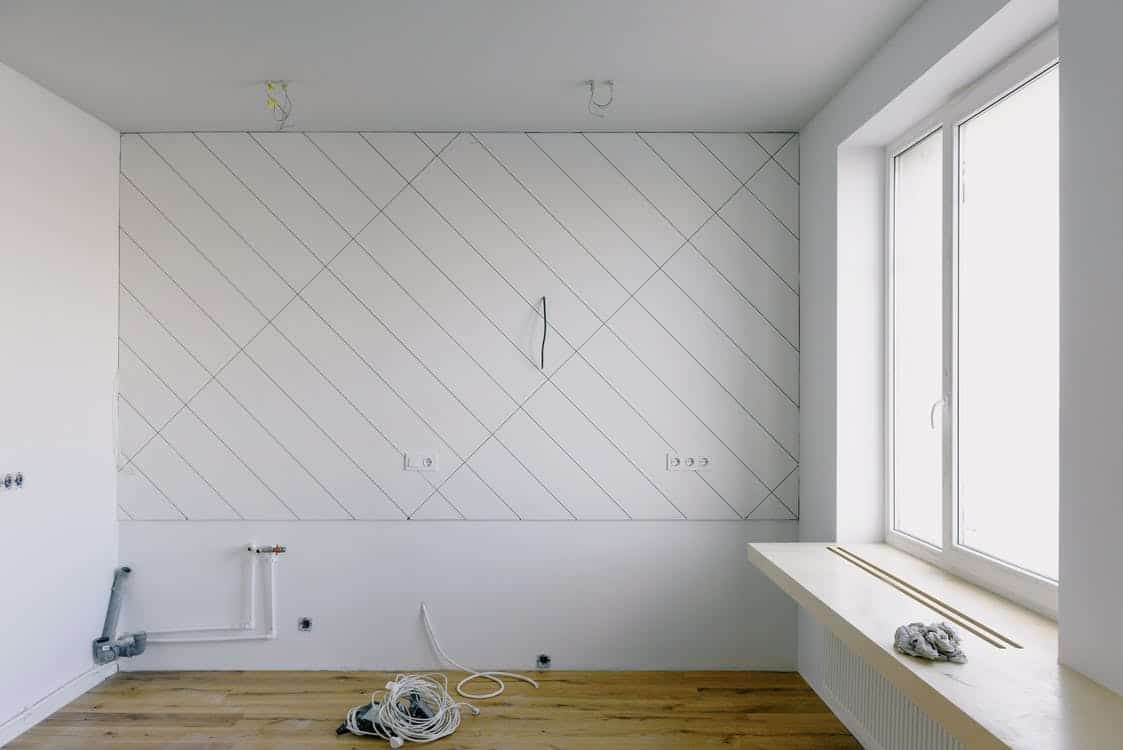Installing laminate hardwood flooring in your home will give an expensive yet polished look of a hardwood floor without spending that much money. However, for the professional results to last, you will need laminate floors to be correctly installed with a high-quality underlayment beneath your laminate flooring. The underlayment for laminate flooring offers enough support for laminate flooring by protecting your laminate floor from moisture, absorbing sound and giving the best thermal insulation. So, which is the best underlayment for laminate flooring?
Rank | Product Image | Brand Name | Link |
|---|---|---|---|
1 | |||
2 | |||
3 | |||
4 | |||
5 | |||
6 | |||
7 |
What Is Flooring Underlayment?
Underlayment is generally the cushion between your subfloor ( the surface you install the laminate flooring on top of) and the floor itself. Laminate flooring is mostly a thin material of about 12mm thick, and it's designed to imitate a polished wood floor without the expense and maintenance needed.
A premium underlayment for laminate flooring is about 2mm-3mm, with the 3mm offering thick cushioning without compromising your joints between boards. Flooring underlayment is made of two layers, and one felt layer offers to cushion, and the other layer works as a vapor barrier against moisture and mold growth.
Some underlayments include self-adhesive tape, while others need a separate tape to join in the row, therefore, improving your floor's permeability. Unless your laminate or vinyl plank flooring includes an attached underlayment, you should assume that you will need one, especially for your kitchen, basement and bathroom.
Why is Flooring Underlayment Necessary?
Flooring underlayment is necessary for laminate flooring because it's a floating floor, and this means it locks the pieces together without gluing or nailing down to the subfloor. In addition, a laminate underlayment works as a protective barrier between the subfloor and your new laminate floor to float easily, especially since laminate floors are prone to expanding and contracting with temperature changes.
Flooring underlayment supports your laminate floating floors by:
- Working as a vapor barrier and prevents moisture from seeping in your laminate floor through the sub-floor
- Adds thickness to absorb sound from foot traffic and prevents any creaking or squeaking noises
- Offers more stability to your laminate floor by ensuring the locks between the planks are well supported
- Smoothes friction of movement and keeps the floor together when temperature changes occur
- Adds some softness and warmth with a squish with each step, and this softens falls
- Hides imperfections in the subfloor and ensures vinyl plank flooring lays correctly over it
1. First Step 630-Square Foot Roll Underlayment
- Price per 630 sq.ft roll
- 3mm thick comes with overlap and tape to install
- Suitable for concrete and wood subfloors
- Use with engineered hardwood, solid hardwood, or laminate...
- Fast & Free Fedex Ground
First Step underlayment is another effective yet affordable underlayment for laminate floors made by the Roberts company. Unlike the above model made from felt, this one comes with Styrofoam beads that you will clean after cutting them.
First Step 630 roll is among the best underlayments that include microbial features, and the microbial properties are important for protecting your sub-floors. Thanks to the Styro Foam beads, there is constant air movement, and this moisture barrier underlayment helps prevent mold and bacteria growth on the flooring installed.
This underlayment works by sealing moisture between the flooring, below and above grade sub-floors. First Step 630 roll is the best laminate flooring underlayment, and it can also be used on multilevel houses and condos with wood or vinyl flooring. It also includes adhesive strips overlap film for combining multiple rolls.
Pros:
Cons:
2. FLOORLOT Laminate Flooring Vapor Barrier Underlayment
- Coverage: 200 sqft per roll
- Includes Moisture/Vapor Barrier
- Extra Thick 3mm Foam Has Natural Sound Absorption
- For Laminate & Engineered Floating Floors
- 3mm Thick / Comes with overlap & tape for easy installation
FLOORLOT is a blue laminate flooring underlayment that gives users maximum value for their money. It is the best underlayment for anyone who doesn't need high sound reduction but generally seeks high-quality laminate underlayment. The underlayment helps reduce any sub-floor imperfections and other flooring irregularities while minimizing hollow sound made with laminate floating floors.
Although FLOORLOT is not focused on reducing the noise level, it still does and levels out uneven floors thanks to its 3mm foam that provides a cushion when walking over it. The underlayment also includes a moisture barrier and a peel & stick tape to help easily install but avoid this underlayment if you have a vinyl plank floor.
FLOORLOT underlayment can be used with other flooring types, including bamboo, hardwood, and vinyl plank flooring. It is available in blue, blue max and gold color which you can choose according to your fancy.
Pros:
Cons:
3. QEP 72003Q 1/4-Inch, 6mm Cork Underlayment
- Easy to install in both glue-down and looselay configurations
- Coverage: 100 sq ft/roll Dimensions: 25-ft x 4-ft x 1/4-in
- Reduces thermal transmission, increasing the effectiveness of...
- STC rating of 52 and IIC rating of 51 with 6-Inch cement slab
- STC rating of 60 and IIC rating of 61 with 6-Inch cement slab and...
QEP 72003Q cork underlayment is an excellent sound barrier for all flooring types, and it is also an environmentally friendly underlayment option for your laminate and engineered wood flooring. In addition, it includes hypoallergenic properties that contribute to creating a healthy indoor air quality in your home and serve as sound insulation supporting floating floor demands.
QEP cork underlayment helps protect your laminate floor from the transfer of stress or crack sound from your subfloor to flooring surfaces. In addition, the natural cork underlayments help minimize sound transmission using the natural sound absorption abilities, which are better than most underlayments in the market.
QEP 72003Q is the best underlayment for laminate flooring as it also helps reduce thermal transmission, making it suitable for you when installing radiant flooring. However, the QEP roll underlayment is only meant to be used on and above grade floors and should not be installed on bathrooms and basements or heavy moisture areas. Instead, install a vapor barrier underneath if you want to install underlayment on such areas.
Pros:
Cons:
4. MP Global Products QuietWalk Laminate Flooring Underlayment
- FOR FLOATING FLOORS: Acoustical floating flooring underlayment...
- LARGE ROLL: Comes as a 6-by 60-foot roll for 360 square feet of...
- SUPERIOR SOUND REDUCTION: Recycled fibers absorb sound and keep...
- MOISTURE PROTECTION: DriWick technology prevents moisture damage...
- GREAT, ALL-YEAR FLOOR SUPPORT AND PROTECTION: Provides...
MP Global Products underlayment is one of the most superior sound reduction underlayments for a click-together floating laminate. It is made with dense fiber, making it compression-resistant and handling consistent and high traffic.
Quitewalk underlayment is the best for laminate over concrete sub-floors because fiber allows it to breathe and protects the overlying laminate flooring against harmful moisture. In addition, the underlayment can work with radiant heat systems. If you live in cold areas, this will be a perfect option for you as it allows heat to permeate evenly while protecting your floor covering from thermal shock.
MP Global Products helps achieve evenly distributed warmth, and it may be used with laminate wood (both glued down or nailed down). If this model is too big for you, you can opt for the 100 square feet one.
Pros:
Cons:
5. Roberts 70-193A Super Felt 360 sq 60 in. x 72 ft. x 3 mm Cushion Underlayment
- For use with engineered wood and laminate flooring
- Provides cushion over concrete and wood subfloors
- 360-Feet square roll.The IIC and STC tests measure sound...
- Sound Transmission Lost Test (STC) rating of 66
- Impact Sound Transmission Test (IIC) rating of 67
Roberts 70-193A Super Felt cushion underlayment is made to be used on or above grade sub-floors for all laminate floors and also the engineered hardwood floating floors. It is the proper underlayment for absorbing sound because its made of recycled fibers that provide an excellent radiant heat floor with a rich R-value without deflecting the sound. In addition, it does a perfect job of preventing sound from transferring from the upper to the lower floors.
Roberts 70-193A Super Felt underlayment includes an adhesive strip and a 3-inch overlap film that links multiple rolls for the large areas. The 360 ft square roll provides adequate cushion over the standard wood floor and concrete floor, keeping the floors warm in the cold winter seasons and cool in the hot summer seasons.
Roberts 70-193A Felt underlayment has a film overlay that adds a moisture barrier protecting your floor from mold or mildew. In addition, this underlayment is easy to install without creating gaps, thanks to the built-in 3-inch overlap between the pieces.
Pros:
Cons:
6. STEICO Wood Fiber Flooring Underlayment
- Increased room comfort: Room comfort is enhanced by The...
- Highest rated sound proofing: US tested and certified after...
- Enhances safety: Absence of VOC and other poisonous emissions...
- Squeak-free floor: High compression strength protects the...
- Natural microclimate regulator: “Vapor Open” technology...
STEICO wood fiber flooring underlayment is among the best underlayments as it's manufactured without VOC and any other harmful emissions, making your home space safer. In addition, it is made with an enhanced click and lock system that prevents squeak sounds while walking on laminate floors and has enhanced sound and acoustic properties to help in providing maximum room comfort and optimal soundproofing.
STEICO flooring underlayment is made from natural products such as pure wood and does not contain glue additives. It is easy to install and handle using readily available household tools to achieve a comfortable and squeaky-free floor.
STEICO flooring underlayment uses an Open Vapor technology that manufactures underlayments and helps prevent any conditions that may promote mold and mildew growth. In addition, since it's porous and natural, it can absorb 20% of its weight in water and prevent any minor leaks from spreading and then damaging your floors.
Pros:
Cons:
7. Roberts Serenity Foam Wood & Laminate Underlayment
- 100 sq. ft. coverage with roll measuring 25 ft. x 4 ft. x 3/32 in
- To be used for wood subfloors
- Can also be used with concrete slabs with recommended Moisture...
- For use under laminate and engineered wood flooring
- Can be used over radiant heated floors
A moisture barrier may not be necessary for homes with a wood subfloor making this Roberts Serenity Foam Wood the best underlayment. This is the best underlayment for laminate floors for shoppers looking for a budget-friendly option.
Roberts Serenity Foam Wood underlayment comes in 100-square foot rolls and uses a 2.4-millimeter polyethylene foam. The foam adds extra cushioning while it smoothes out minor perfections in the sub-floor, allowing a better and even laminate flooring installation. It can also be used over radiant heated floors and concrete floors when combined with a vapor barrier underneath.
Roberts Serenity Foam is super affordable, but it doesn't include a built-in adhesive strip to make the product easy to install. In addition, each roll of this product is 25 feet long and 4 feet wide. Finally, remember that you can only use this underlayment above a concrete slab with additional moisture protection.
Pros:
Cons:
What are the Different Types Of Underlayments
Choosing the right type of underlayment for laminate flooring is necessary to install laminate flooring successfully. Underlayment comes in three different types, and each is meant to suit a different type of subflooring. However, keep in mind that some sub-floors come with an underlayment attached, and in such a case, you will not need to purchase or install underlayment. The attached vapor barrier protects overlying laminate floors from any harmful moisture.
There are several basic types of underlayment for laminate flooring, and they include:
1. Standard foam underlayment
Polyethylene foam is among the most affordable forms of underlayment, and it can be super effective with the right type of floor, which can be easy to find booth online or locally. True to its name, this foam underlayment type has a thin foam layer that works as a buffer between a sub-floor and laminate flooring, and it features a foam padding of about 1/8 inches thick.
It creates a cushion between floors, minimizing noise while giving the floor some more flex for those walking on it. In addition, foam underlayment doesn't provide a vapor barrier, so you should avoid using it in samp areas.
Foam underlayment is relatively easy to install, even for people new to installing laminate flooring. One of the reasons most people prefer it is because it comes in large rolls, allowing you to cut specific lengths and widths you may want. This is the best underlayment for plywood and an oriented strand board (OSB) subfloor, and it costs about $0.22 to $0.30 per square foot and $0.30 and $0.45 per square foot for moisture-blocking and sound-reducing foam.
2. Felt underlayment
Felt underlayment is considered a gold standard for the underlayments, and it's the most picked choice. This type is made from recycled fibers, 3mm thick, and is relatively heavier and easier to smoothen out than cork or foam underlayment.
Felt underlayment offers good sound reduction characteristics, making your floor comfortable underfoot. In addition, the underlayment also includes a built-in vapor barrier that helps you protect your hardwood or laminate floors from moisture.
Felt underlayment works perfectly as an insulator, and it keeps your cooling and heating inside the house where you want it to stay, thus creating a perfect home environment for all seasons. It also does a superb job of cushioning your floor and offering more comfort for standing and walking. Because it's also made of recycled fibers, it is LEED certified and qualifies as an eco-friendly choice. The felt underlayment for laminate floors will cost you between $0.75 to $1.25 per square foot.
3. Cork underlayment
Cork is a natural underlayment type made from cork bark trees, and most of the high-quality cork material on the market is from Portugal. It is a premium underlayment and includes some naturally antimicrobial properties that will prevent mold growth between the laminate and the sub-floor.
Cork is available in 3mm or 6mm thicknesses. If a moisture barrier is important for you, these cork underlayments will be suitable for preventing damage to your laminate floor. In addition, this type is an effective way of adding insulation into your space, and the cork underlayment keeps both the cold and hot air inside and provides a barrier to prevent hot or cold air from escaping through the floor.
Cork underlayment also offers ample cushioning good sound insulation, and it absorbs sound well, and it will absorb footsteps on an upper floor or an apartment with a downstairs neighbor. However, it is relatively more expensive than foam or combination underlayment, and it costs up to twice as much.
Cork underlayment is super durable and won't need replacement often, and it also has hypoallergenic properties making it a suitable choice for households with allergic people. In addition, thanks to the antimicrobial nature of the cork, mildew, mold and bacteria growth are prevented, which creates a healthier home environment.
Lastly, cork is fire-retardant and therefore offers an additional safety benefit, and it costs anywhere between $0.50 to $0.75 per square foot.
4. Combination Foam Underlayment
The combination foam underlayment is a combination of foam underlayment and vapor barrier underlayment, and it helps in moisture protection of your sub-floor. The type of underlayment can be installed in areas with OSB/plywood subfloor and concrete sub-floor in bathrooms or basements. However, it's more costly than the basic foam underlayment for laminate floors.
5. Vinyl-Backed Underlay
Vinyl underlayment for laminate offers noise reduction capabilities, but the priority is the seams should be sealed for moisture protection.
Factors to Consider Before Purchasing the Best Underlayment for Laminate Flooring
When installing laminate flooring, you should remember that it needs an underlayment. Underlayment for laminate flooring installation prevents clicking sounds when you walk across it, and it will make your floor feel softer. In addition, laminate flooring underlayment makes installing the planks easier and removes even the smallest consistencies on your sub-floor.
Some underlayments include self-adhesive tape, while others need separate tape to join in the row, therefore, improving your floor's permeability. Ensure you install the best underlayment for laminate flooring for the best results.
Here are some factors you will need to observe when shopping for your laminate underlayment:
1. Type of Sub-floor
The sub-floor you plan to use or the one installed plays an important role in determining how much you need underlayments for laminate flooring. For instance, for a plywood sub-floor, you won't need a sturdy underlay like for a concrete subfloor. With the plywood subfloor, you can trade the vapor barrier needed for the underlay with sound and thermal characteristics.
For concrete subfloor, moisture is a big problem, and concrete subfloors are porous, and therefore they hold on to moisture. The best underlayment for this would be one that prevents any moisture from the sub-floor and the underlayment for a basement floor.
2. Sound Absorption
Laminate flooring on itself is quiet to walk on, but it can be noisy when it flexes against a sub-floor and without an underlayment for laminate, the noise can be transferred to the floor below. The best underlayment will act as a noise-reduction buffer between the two surfaces, and it will spare you from annoying squeaks and creaks as you are walking by.
Laminate flooring is said to have a hollow-like sound, and its Sound Transmission Class(STC) ratings and Impact Isolation Class (IIC) ratings are vital for laminate flooring underlayment. The IIC ratings help determine the number of decibels and the types of sound the underlayment for laminate flooring can help reduce. STC ratings show how many airborne noises and IIC ratings are and measure the impact of footsteps and drops and sound reduction ability.
Both STC and IIC ratings are between 15 and 8o, and the higher the number, the better the material will reduce sound. For example, a standard wood flooring may have an STC rating of 40, while a hardwood floor with no sound isolation may have an IIC of 45.
Choose a product with STC and IIC ratings of 60 and above to get the best sound absorption. Importantly, consider the sound ratings, especially if you are laying your laminate floor on the apartment and commercial buildings.
3. Thermal Ratings
Most laminate underlayments come with a thermal rating (R-Value), and the rating helps determine the underlayment heat conductivity ability. The lower the R-value, the better heat conductivity or, the higher the heat will run through it.
If you are in a cold area that needs installing the floor heat system, you should pay extra attention to the R-value of the underlayment. Underlayments with a good R-value can also help keep hot air out during the summer, and most underlayments will have an R-value of 2 or 3.
4. Cost of Underlayment
Underlayments for laminate flooring are sold in square footage or rolls, and they differ in pricing, and it depends on what project you are working on. If you have a big project to avoid buying excess, it is cost-friendly to purchase laminate floor underlayment in square feet.
Another factor affecting the price is the brand and the number of features your laminate underlayment will include. Therefore, before making your final purchase decision, it is important to compare your budget with the cost of laminate underlayment. You can get high-quality underlayment for $1.5 per square foot, depending on your location and where you make your purchase from.
5. Thickness of the Underlayment
This is mainly the main question you will have in mind where the underlayment thickness is what most customers will struggle with. It's important to mention that all the above factors such as density, type and sound ratings also matter as much but not more than the thickness of the underlayment materials.
An extra thick underlayment is only necessary if you install carpeted flooring or even smooth uneven sub-floor. Otherwise, an underlayment with extra padding will cause your laminate or vinyl flooring to flex too much and may, as a result, break the locking system.
Opt for a laminate underlayment around 2 to 3 mm thick but be keen as some distributors claim that 6mm underlayment for laminate can double the sound absorption. However, for soundproofing, the best indicators are material and density.
If you have a laminate floor with an already attached underlayment, then you will not need to install another one as this attached underlayment is there to save you time. However, you may need to add a vapor barrier if you install laminate flooring above a concrete subfloor, but with an attached underlayment, you won't include one.
6. Antimicrobial properties
Some underlayments for laminate, such as cork underlayment, have additional advantages such as natural antimicrobial characteristics. It is an essential factor to consider depending on your flooring needs and your environmental conditions of where to install it. These microbial properties make your laminate floor healthier.
Frequently Asked Questions
1. How thick should laminate underlayment be when installing laminate flooring on high traffic areas?
When installing laminate flooring on high traffic areas or if you just want extra cushioning underfloor, the best laminate underlayment would be one with at least 6mm thick. However, the standard underlayment is 3mm or ⅛ inches thick, and the thickness is usually enough for any type of subflooring.
2. What is the best underlayment for concrete floors with laminate flooring?
The best underlayment for a concrete slab is foam or cork underlayment, as concrete is tough on your feet. Therefore, these materials will help add some cushion between the laminate and concrete flooring. Notably, you will still need to add a vapor barrier unless the underlayment attached already has one.
Image Credit: builddirect.com

